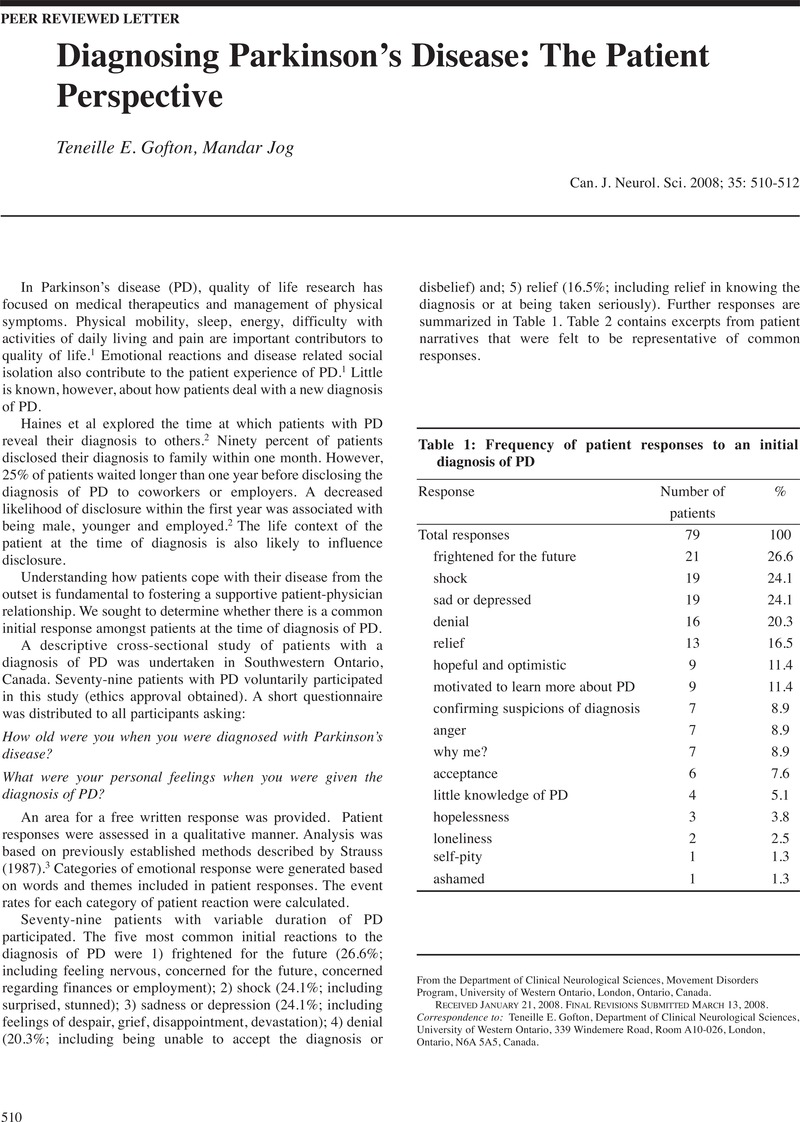Crossref Citations
This article has been cited by the following publications. This list is generated based on data provided by Crossref.
Gofton, Teneille E.
Kumar, Hrishikesh
Roberts-South, Angela
Speechley, Mark
and
Jog, Mandar S.
2015.
Validity, Reliability, and Insights from Applying the McGill Quality of Life Questionnaire to People Living with Parkinson's Disease (MQoL-PD).
Journal of Palliative Care,
Vol. 31,
Issue. 4,
p.
213.
Warren, Emma
Eccles, Fiona
Travers, Vicky
and
Simpson, Jane
2016.
The experience of being diagnosed with Parkinson's disease.
British Journal of Neuroscience Nursing,
Vol. 12,
Issue. 6,
p.
288.
ROGER, KERSTIN
WETZEL, MONIKA
and
PENNER, LESLIE
2018.
Living with Parkinson's disease – perceptions of invisibility in a photovoice study.
Ageing and Society,
Vol. 38,
Issue. 5,
p.
1041.
Schepici, Giovanni
Silvestro, Serena
Trubiani, Oriana
Bramanti, Placido
and
Mazzon, Emanuela
2020.
Salivary Biomarkers: Future Approaches for Early Diagnosis of Neurodegenerative Diseases.
Brain Sciences,
Vol. 10,
Issue. 4,
p.
245.
Goldoni, Riccardo
Dolci, Carolina
Boccalari, Elisa
Inchingolo, Francesco
Paghi, Alessandro
Strambini, Lucanos
Galimberti, Daniela
and
Tartaglia, Gianluca Martino
2022.
Salivary biomarkers of neurodegenerative and demyelinating diseases and biosensors for their detection.
Ageing Research Reviews,
Vol. 76,
Issue. ,
p.
101587.



